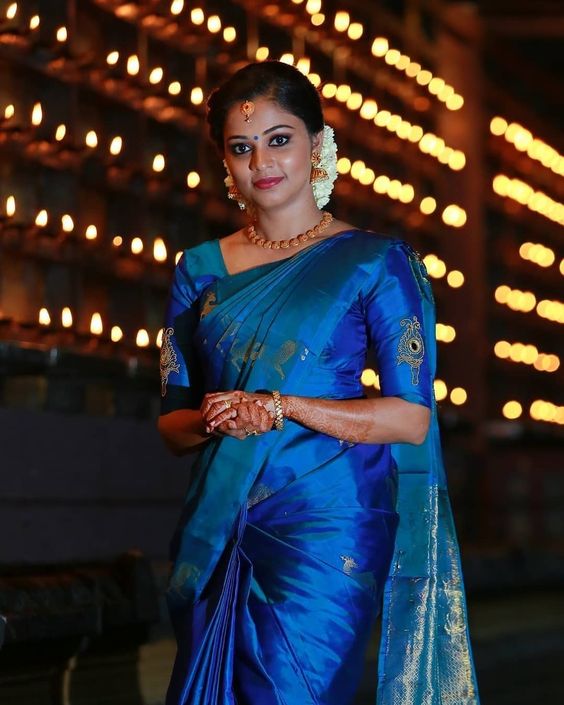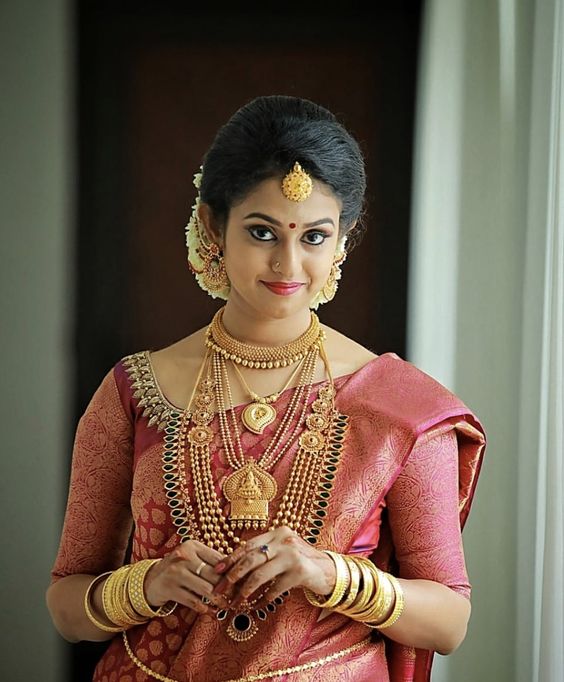Among the many varieties of Indian sarees, the Kanjivaram stands out for its sheer elegance, intricate weaves, and rich history. Woven in the small town of Kanchipuram in Tamil Nadu, these silk sarees are considered heirloom pieces and are passed down generations as treasured gifts. Let’s delve into the origins, intricate weaving process, designs, and importance of the gorgeous Kanjivaram silk.
The Origins of Kanjivaram saree
The Pallava dynasty ruled Kanchipuram in the 6th century AD and pioneered the art of silk weaving. The town was a major silk producer and the weaving techniques were further refined under the Cholas from the 10th to 12th centuries. Royal patronage and their demand for opulent silks drove innovation and soon these saree became coveted by royalty across India.
The signature Kanjivaram saree as we know it today developed in the 18th century. The local silk gained prominence at the Nayak courts. Their motifs were inspired by temple architecture, sculptures, and local flowers. Though initially created for the nobility, the weaves soon became popular among other classes.
Painstaking Process of Weaving
Kanjivaram sarees are made from the finest mulberry silk threads sourced from Karnataka. The silk is boiled, bleached, hand-dyed in vivid colors, and washed before weaving starts.
Three shuttles are used – one for the extra weft motifs, one for borders, and one for the body. The motifs are woven with a jacquard technique that involves using a perforated paper card. Two weavers work side by side in perfect coordination.
The gold ‘zari’ threads are drawn from pure gold coated silver wires that make the saree shine beautifully. The minimum thread count is around 300 which can go up to 800, making them extremely dense and heavy.
Traditional Designs and Patterns
Kanjivaram sarees traditionally came in earthy, jewel tones made from natural dyes. Crimson, bottle green, royal blue, emerald, yellow ochre, orange, black, and white were popular.

The borders feature signature temple designs interspersed with peacocks, parrots, flowers, leaves, and stripes. Pallu designs are the most complex using floral, geometric, and paisley motifs. Checks and stripes run along the body.
The wide contrasting borders lend a regal touch. Traditional styles showcase geometric patterns and motifs inspired by South Indian temple architecture and sculpture. Figures like ‘mudras’, peacocks, parrots, swans, leaves, mangoes or ‘koyambus’ widely feature on the pallu.
Complex Weaves and Variants
Over decades, weavers have innovated and mastered dazzling design techniques that are unique to Kanchipuram sarees such as:
- Rudraksha Weave: Flower motifs linked closely resembling rudraksha beads
- Sanguthal: Gold butis lined up closely like a chain
- Jaalra: Gold zari woven in geometric or net style pattern
- Pathu: Gold checks pattern used on the field
- Butta: Floral motifs sprinkled across body and border
- Shipey: Stripes embellished with zari
- Temple Designs: Unique temple tower patterns on the pallu
The striking contrast between the body and the pallu and border is a hallmark of Kanjivarams. The body is usually in a darker, more muted color while the pallu and border shine brightly in a vivid, richly contrasting hue.

